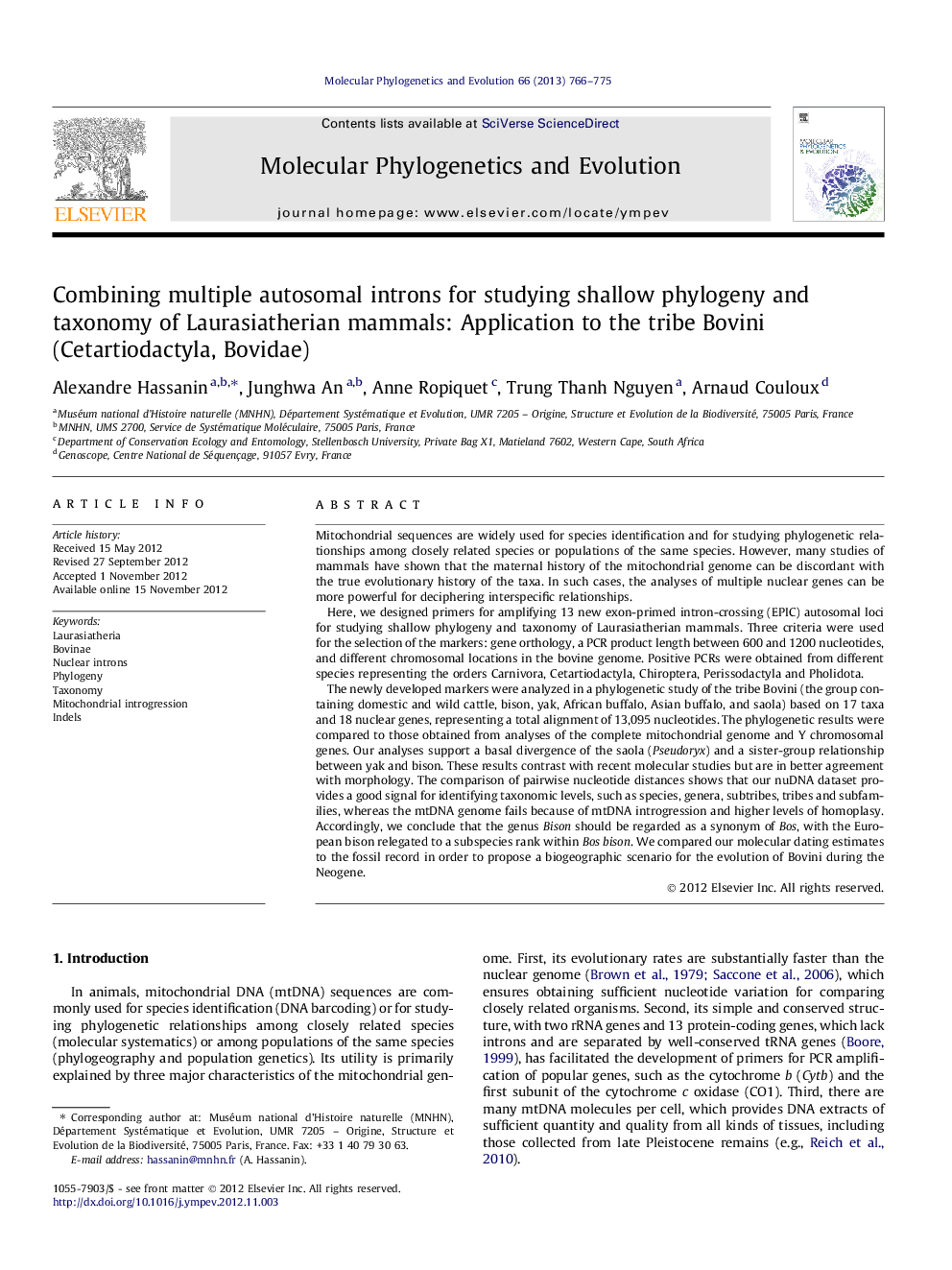| کد مقاله | کد نشریه | سال انتشار | مقاله انگلیسی | نسخه تمام متن |
|---|---|---|---|---|
| 2833946 | 1164275 | 2013 | 10 صفحه PDF | دانلود رایگان |

Mitochondrial sequences are widely used for species identification and for studying phylogenetic relationships among closely related species or populations of the same species. However, many studies of mammals have shown that the maternal history of the mitochondrial genome can be discordant with the true evolutionary history of the taxa. In such cases, the analyses of multiple nuclear genes can be more powerful for deciphering interspecific relationships.Here, we designed primers for amplifying 13 new exon-primed intron-crossing (EPIC) autosomal loci for studying shallow phylogeny and taxonomy of Laurasiatherian mammals. Three criteria were used for the selection of the markers: gene orthology, a PCR product length between 600 and 1200 nucleotides, and different chromosomal locations in the bovine genome. Positive PCRs were obtained from different species representing the orders Carnivora, Cetartiodactyla, Chiroptera, Perissodactyla and Pholidota.The newly developed markers were analyzed in a phylogenetic study of the tribe Bovini (the group containing domestic and wild cattle, bison, yak, African buffalo, Asian buffalo, and saola) based on 17 taxa and 18 nuclear genes, representing a total alignment of 13,095 nucleotides. The phylogenetic results were compared to those obtained from analyses of the complete mitochondrial genome and Y chromosomal genes. Our analyses support a basal divergence of the saola (Pseudoryx) and a sister-group relationship between yak and bison. These results contrast with recent molecular studies but are in better agreement with morphology. The comparison of pairwise nucleotide distances shows that our nuDNA dataset provides a good signal for identifying taxonomic levels, such as species, genera, subtribes, tribes and subfamilies, whereas the mtDNA genome fails because of mtDNA introgression and higher levels of homoplasy. Accordingly, we conclude that the genus Bison should be regarded as a synonym of Bos, with the European bison relegated to a subspecies rank within Bos bison. We compared our molecular dating estimates to the fossil record in order to propose a biogeographic scenario for the evolution of Bovini during the Neogene.
Figure optionsDownload as PowerPoint slideHighlights
► Thirteen new autosomal introns for studying shallow phylogenies of Laurasiatheria.
► We examine the phylogeny of the tribe Bovini using 18 independent autosomal loci.
► The yak and bison are closely related, and the saola diverged first within Bovini.
► NuDNA distances can be used to identify taxonomic levels (species, genera, etc.).
► The American and European bison should be treated as two subspecies of Bos bison.
Journal: Molecular Phylogenetics and Evolution - Volume 66, Issue 3, March 2013, Pages 766–775